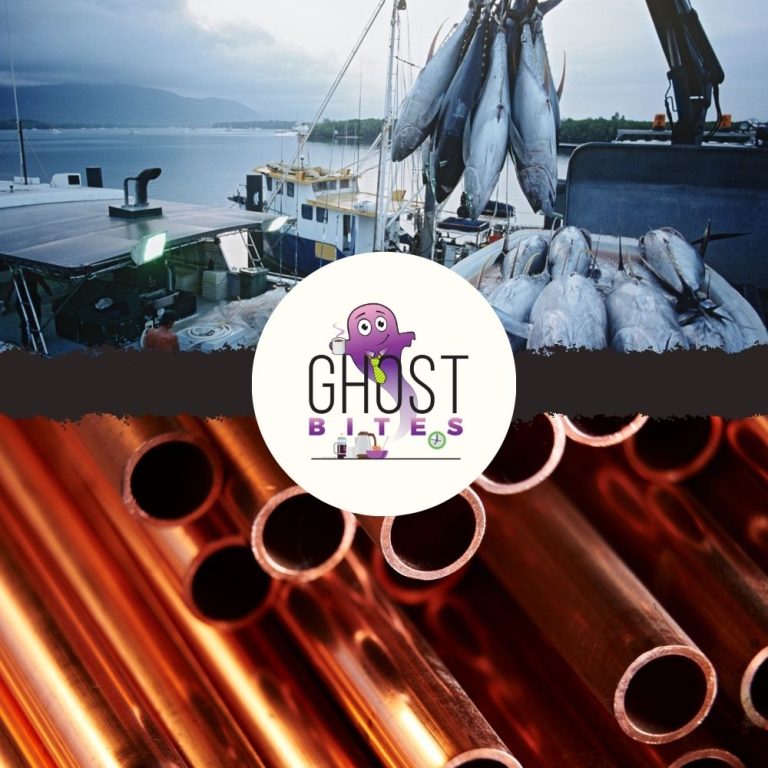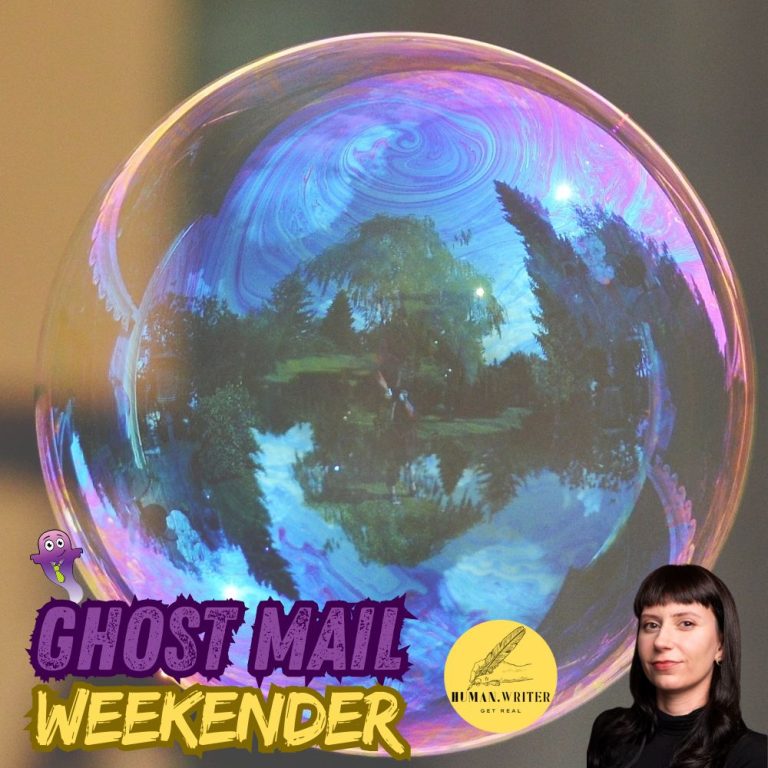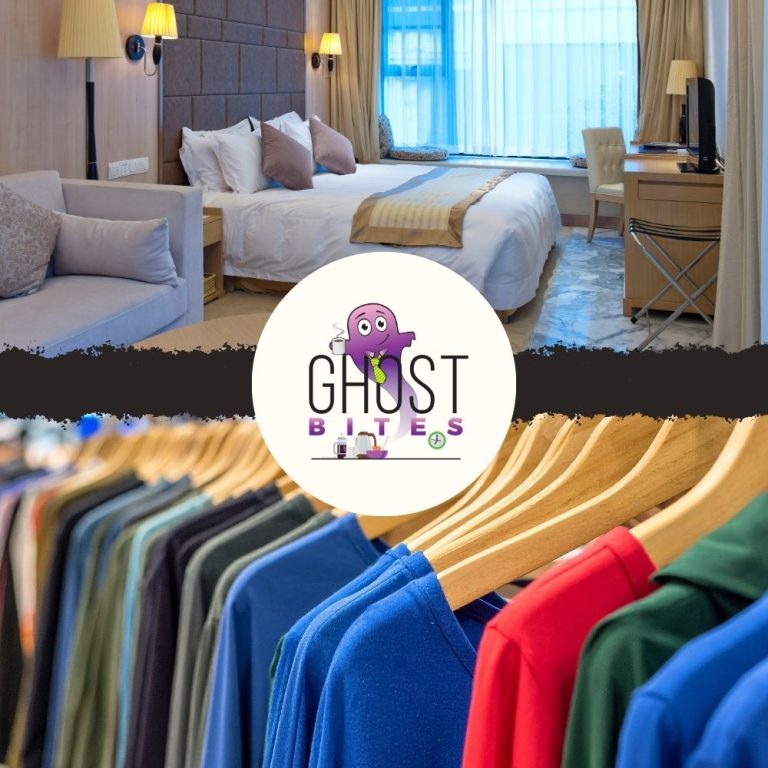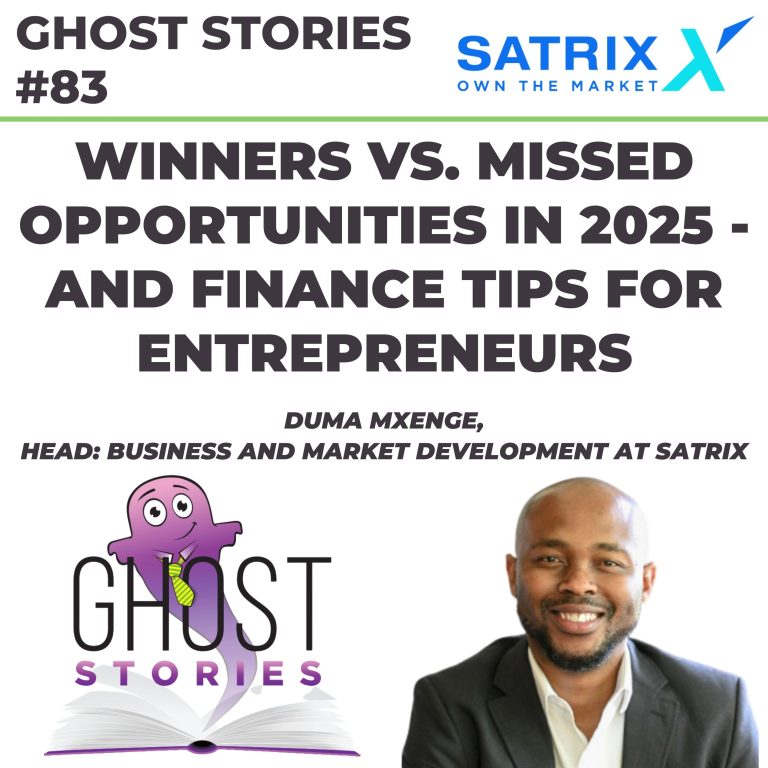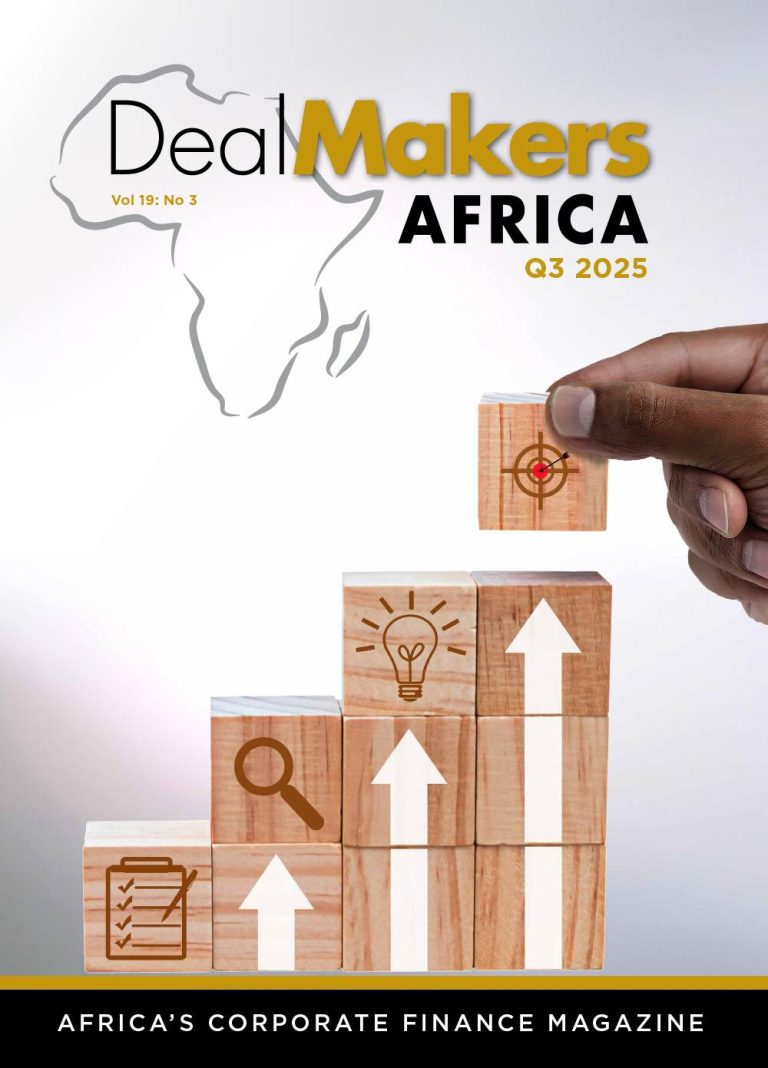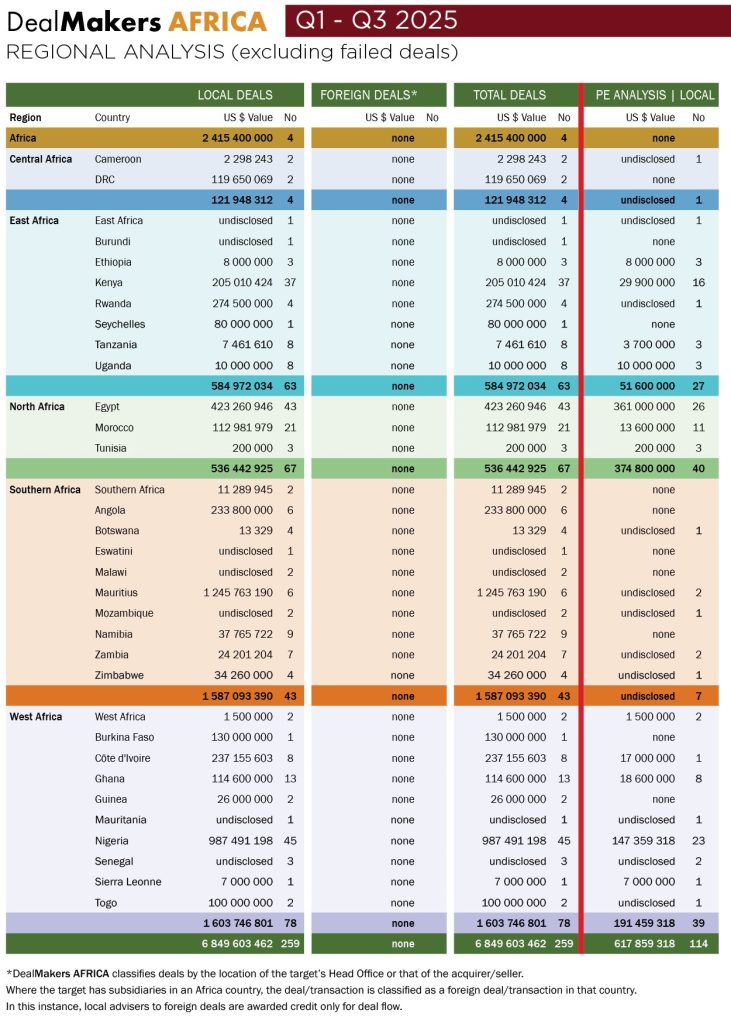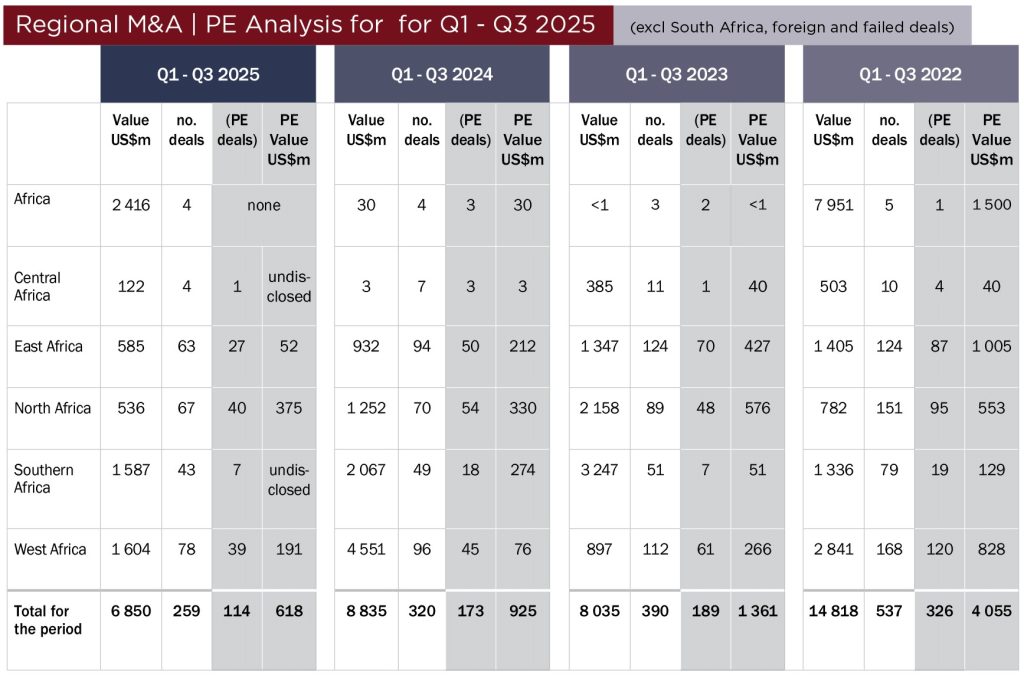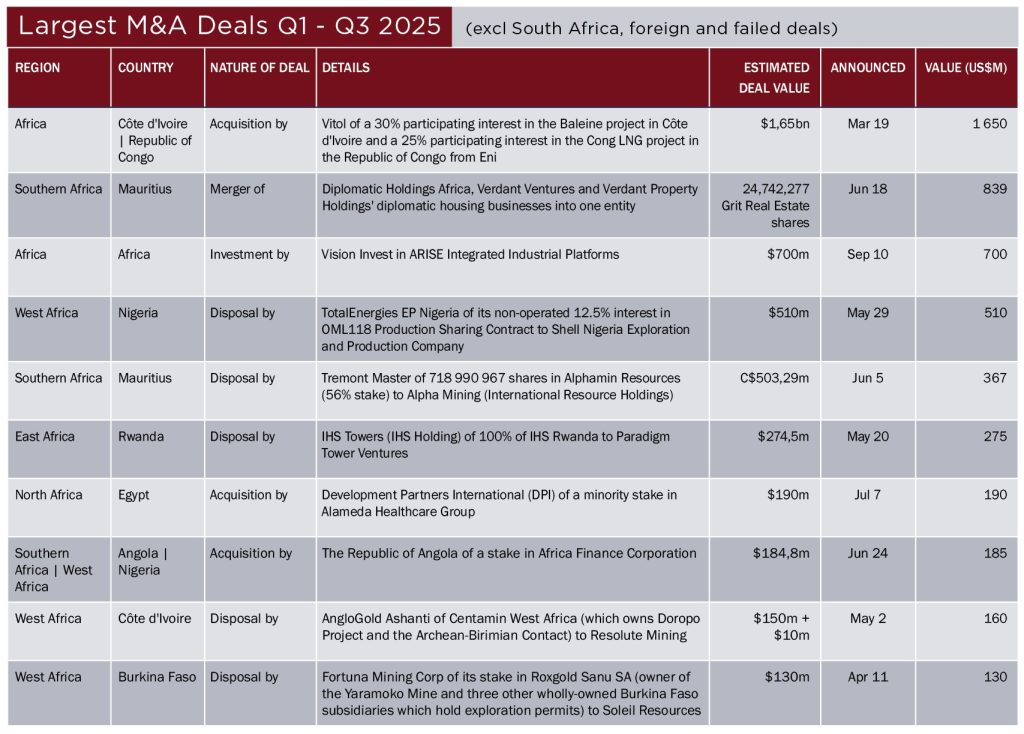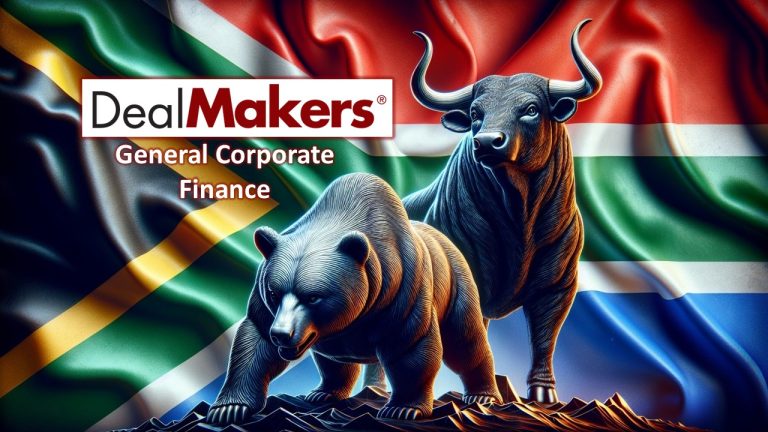Listen to the podcast here:

Medicine is moving into a world where software spots patterns before humans sense symptoms, and breakthrough therapies can move markets faster than earnings reports. Longevity is rising, costs are climbing, and global healthcare systems are left to wonder whether innovation will save them or bankrupt them first.
In this episode of No Ordinary Wednesday, Jeremy Maggs speaks with Dr Jimmy Muchechetere from Investec Investment Management UK to unravel the forces rewiring global healthcare, from the boom-and-bust frenzy around weight-loss drugs to AI promising to predict illness long before it strikes.
Please scroll down if you would prefer to read the transcript.
Hosted by seasoned broadcaster, Jeremy Maggs, the No Ordinary Wednesday podcast unpacks the latest economic, business and political news in South Africa, with an all-star cast of investment and wealth managers, economists and financial planners from Investec. Listen in every second Wednesday for an in-depth look at what’s moving markets, shaping the economy, and changing the game for your wallet and your business.
Also on Apple Podcasts, Spotify and YouTube:
Transcript:
Chapters
00:00 Introduction to the age of data and DNA
01:34 Are we reaching the limits of human longevity?
02:13 Are weight-loss drugs a bubble or a structural shift?
04:13 How the White House–pharma deal changes drug pricing 8
06:58 Who wins and loses in a world with fewer illnesses?
08:10 Why longevity is becoming a macroeconomic risk
08:46 How AI is reshaping chronic care and healthcare efficiency
10:28 Who holds power in an AI-driven pharmaceutical world?
12:27 How to maintain trust when AI outperforms humans in diagnostics
13:51 How AI is transforming preventative medicine
16:27 Will data expertise surpass clinical expertise?
17:35 Who is accountable when AI influences medical decisions?
18:57 Why regulation must catch up with rapid AI innovation
20:47 Will AI-driven healthcare widen inequality?
22:39 How demographics and geopolitics shape healthcare tailwinds
23:56 How leaders build conviction in a VUCA healthcare landscape
25:22 The next frontier in personalised and preventative medicine
[00:00:00] Jeremy: If the 20th century was the age of oil and steel, the 21st may well be the age of data and DNA.
Just as the industrial revolution transformed how we built the world around us, today’s technological revolution is transforming how we understand and rebuild the world within us. We’re not just extending lives, we’re redefining what it means to be healthy, productive and human.
But as we push the boundaries of longevity, we’re also confronting a profound paradox: the same tools that promise to cure disease could also reshape economies, challenge ethical boundaries, and widen the divide between those who can afford to live longer and those who cannot.
I’m Jeremy Maggs, welcome to another edition of No Ordinary Wednesday. In this week’s episode we explore these tensions with Dr. Jimmy Muchechetere, Equity Analyst at Investec Investment Management UK, who covers the global Healthcare and Industrials sectors.
We’ll discuss how rising life expectancy is rewriting global healthcare demand and investment priorities, why the sector has underperformed despite strong structural tailwinds, and how artificial intelligence is transforming every stage of medicine – from drug discovery to diagnosis. We’ll also unpack how the explosive rise of weight-loss drugs is reshaping everything from consumer behaviour to healthcare economics, and what that means for investors.
Dr. Jimmy, a warm welcome back to South Africa and most importantly, to No Ordinary Wednesday.
[00:01:34] Jeremy: Life expectancy in developed markets has climbed above 80. Do you think we are starting to approach the limits of human longevity or are we just getting started? What’s your view?
[00:01:45] Jimmy: Well, that’s a very big question. I think one would hope that we are still progressing, but it does feel like we are closer to the end than we are to the beginning. And by that, I mean we’ve made a lot more progress than I think what is left. And this is really because the improvements that we’ve seen have always had unforeseen consequences, which means that there is usually a limit. I don’t think we are far away from approaching that limit.
[00:02:13] Jeremy: Let’s talk a little bit about the big cultural and financial phenomenon, and that is weight-loss drugs. Maybe let’s get a view from you on whether we are witnessing medicine’s version of a tech bubble or Jimmy, maybe a legitimate structural shift in global healthcare economics. What’s your reading?
[00:02:35] Jimmy: It’s interesting. I think the answer is both. I think there is something real and tangible that is happening, that is changing the world, that is going to change healthcare as we know it. So, if you look at the biggest killers right now, it’s cardiovascular disease, whether it’s stroke, heart attacks and related diseases, and then it’s cancer, right? Those are the two biggest killers.
I think given the advancements we’re getting in these anti-obesity drugs, those cardiovascular events will fall from top two probably, second tier at best, when you look 10 years back from now. But that’s not to say we haven’t got a bubble. And the bubble isn’t really about the science or about the market or about the structural factors. It is more about the excitement around financing many of these initiatives, in many ways there was a bubble that has popped. So, the GLP 1s were all thenage two years ago when Novo Nordisk was the biggest company in Europe. But now you look at it, Novo Nordisk is down 50%. Is the company really changed?
Yeah, it’s changed a little bit, but is it 50% worse off? Probably not. And if you think about it, what has really changed is the valuation that the market is applying to the shares of Novo Nordisk. I mean, if you look at the revenues, the revenue’s bigger now than it was two years ago. Profits are bigger now than they were two years ago. Margins are bigger now than they were two years ago, and yet the company’s valued at half the price than it was two years ago. So, in many senses, there was a bubble that has popped, but in terms of the fundamental picture, it continues to improve.
00:04:13 Jeremy: So, Jimmy, let me ask you this. Now, the White House deal that we’ve seen with big Pharma on GLP 1s, to what extent do you think that’s going to be a game changer?
00:04:23 Jimmy: I think it is going to be a game changer to a big extent. And let me just explain… So the US market is a complex web when it comes to drug pricing. So, they’ve got what’s called the list price, which is the price that everybody can see, and then there are three or four layers of middlemen who negotiate the prices down so that everyone is paying a different price depending on how well the negotiation went with one or three or your middlemen, and that’s based on volume and price and past deals and what else you’re buying so it’s very, very complex and it’s very, very opaque.
What this deal with the Trump administration does is it brings in a lot of clarity in terms of what the economics of GLP-1 production and manufacturing is, what the companies are getting and what the patients are paying. So that’s very important. So, if a drug cost is a $100 to manufacture, to develop and manufacture, if you add three or four layers, then that could end up being $500, right?
But the pharma companies are only getting $100 so for them to make a deal with the Trump administration, where they’re still getting exactly the same economics as before, except that they’re just cutting the middlemen by making the price more transparent, is brilliant and is very good. Of course, it’s not good for the middlemen, but it’s good for patients and it’s good for the companies.
But then there’s an added benefit which is outside the US. So one of the things that the Trump administration has been very unhappy about is that the US prices, and I’m talking about the list price here, which is the one that everyone sees, has sometimes been twice, three or four times higher than what’s paid in other G10 nations, the UK, France, Germany etc. And they see that as an injustice, which, you know, is a fair point to make, but now that you have a transparent price which is comparable to other G10 nations, then that problem goes away.
But not only that, in the past, pharma companies tended not to be able to negotiate on prices with the European Union, with the NHI in the UK because it’s such a big behemoth now with what’s called MFN (Most Favoured Nation) pricing, they are now able to negotiate and say, look, you know, in the US the US government is paying X amount for the GLP-1 drugs. this is the price you have to pay for GLP-1 drugs. So, for pharma companies it’s actually a big win because there’s now price transparency. Their economics haven’t changed at home in the US but outside the US they’re able to negotiate and get a higher price than they were getting before.
00:06:58 Jeremy: So let me push you a little further on economics as far as this equation is concerned, if a pill or an injection can make us slimmer and live longer, I guess one’s got to ask what happens to industries built around illness? And it would be the full gamut from insurers through to the food companies.
00:07:16 Jimmy: I think you’re right. I think with many innovations, this one included, there will be disruption, and we are already seeing that disruption, right? So, if you look at the anti-obesity drugs, they did not get healthcare insurance coverage until they had more than one indication.
So just being obese was not enough there to get a second indication. Now, the top two drugs did get that indication, which was obstructive sleep apnoea, and they’re looking at other indications as well, such as Alzheimer’s disease, fatty liver disease, chronic kidney disease, etc. But the economics of the healthcare insurance industry have already changed because of that.
So I think there is no question that there will be some sub-sectors that will be disrupted, there will be winners, there will be losers, but the market is definitely going to evolve because it is undeniable that these drugs have got a very significant impact on human health.
[00:08:10] Jeremy: Now we know that life longevity is often celebrated, but I think it’s fair to say, Jimmy, that it could also become the next major macroeconomic risk. Why do we say this? Well, obviously it’s going to strain pensions. It would impact on productivity and healthcare systems and all simultaneously. Now, I know that you recently gave a presentation that outlined ways in which artificial intelligence is transforming drug development. Which of these is going to have, in your opinion, the most immediate economic impact, particularly through the prism for investors?
[00:08:46] Jimmy: That’s a big topic. What we are seeing is that people are indeed living longer and therefore healthcare costs are rising because as people live longer, the tendency for more things to go wrong rises, and so they demand more of healthcare services. And so, the cost of healthcare, you know, is rising as a proportion of GDP and markedly in absolute terms.
So, we have seen a shift from acute care funding towards chronic care funding, and that is a shift that AI can help with in terms of maximising bed efficiency, for example, in terms of maximising post admission care, in terms of putting together disparate working streams.
So if you are elderly and you’ve got say, three or four things that have gone wrong, you’re being looked after by three or four different specialties – the ability to have those specialists talk to each other and manage a person as one person in a multidisciplinary format is something that has been missing because these specialties often live in silos, but AI is actually bringing those things together.
So, we have got companies for example, that we own in our funds. HCA Healthcare is one such example where they are using AI to advance all these things that I’ve given as examples, and that is not only improving the bottom line for the company itself, but also improving patient care and satisfaction for some of the workers that we see.
But certainly, it is a big topic and there’s a lot of innovation that needs to come, and AI is going to be a big part of that solution.
[00:10:28] Jeremy: Well, let me pick you up on that word, innovation. We know that artificial intelligence is changing the economics of drug discovery, but I guess one could also ask if it could change who holds power in pharmaceuticals more broadly? Would it be scientists, algorithms, or maybe even capital?
[00:10:48] Jimmy: Yeah, I think AI is progressing faster than regulations can keep up, and so that is an area that AI ethicists are really looking to quite closely to build some guardrails around AI.
As things stand now, the value lies with the capital. So, if you finance a project, you own the patterns and the knowledge that comes from that investment. Is that likely to change in the short term? I’m not so sure. I think that remains the case as long as the humans remain in control. I mean, if it’s an autonomous system, then becomes a different question, but right now every development of AI in healthcare has got a human-in-the-loop component to it. And because it continues to have that, the value continues to accrue to the capital providers because they on the intellectual property.
So, I think that’s where the value lies. The other thing as well is the data, which is very valuable, and that’s effectively the blood supply for AI. The data belongs to the patient and continues to belong to the patient. So as the regulations around AI evolve, if they keep that patient intact, i.e. that patient owns their own data, then the value will continue to lie with the patient.
If they decide to monetise it or give it away to an AI algorithm, then maybe that will change, but as far as the starting point is concerned, that’s where the regulators need to come in and put guardrails and clarifications.
[00:12:27] Jeremy: Let me move to diagnostics now if I can. We also know that AI is reading scans and pathology slides a lot faster than specialists. That in itself is astonishing. How do we, against that backdrop then, Jimmy maintain trust when machines are essentially outperforming humans in matters of life and death?
[00:12:46] Jimmy: That’s again another important point. So currently human-in-the-loop I mentioned remains important, so an AI cannot make a diagnosis and act on it when we get to the agentic world.
Agentic AI again, there need to be guardrails to make sure that the agency that these AI systems have is limited to a certain point. They can act to a certain point, and so that’s going to remain really important.
But what we’re seeing today is that AI is being used as tools. So, if there are thousand scans that a human should read, if you apply AI, it’ll probably flag a proportion of them five, ten and then the human will then have a look at the ones that have been flagged and you know, with some confidence.
And then the other part is recalibration. So, every so often, you know, depending on the system, they have to be recalibrated to make sure that they’re not going off piste. And then there also needs to be an audit trail. So, they need to be audited, you know, every now and then, depending on the organisation. These guardrails continue to be important, especially where the technology is moving so fast.
[00:13:51] Jeremy: Do you think that early AI intervention and predictive analytics could redefine what so-called preventative medicine means? In other words, turning healthcare from a cost centre into a real investment in productivity.
[00:14:10] Jimmy: 100%. We think many diseases, indeed, fatal diseases, if caught early will not a problem at all. In fact, the cost in the healthcare system will be reduced. If you think about it, let’s say somebody has a stroke, that somebody will need to be taken by an ambulance, which is a cost, to an A&E department, which is at a cost. They’ll need to be seen by specialists and have all these tests done, which is a cost. They’ll need to be admitted, which is a cost. And then when they get discharged, they need physiotherapy and nursing care, which is a cost, and maybe they’ll be disabled for the rest of their life and they’ll need ongoing care, which is a cost.
If you can prevent the stroke from happening in the first place, you not only save and extend lives, but you also save on all these other costs that are out there, and so one of the really exciting areas we are seeing AI being used is early warning systems. Again, their agency is restricted. They’re just a warning system to say, we think something might be going wrong, much in the same way that currently doctors use early warning systems, you know, you check a patient chart and sees the temperature rising. Is the blood pressure dropping? Is the pulse rate high? Is the respiratory rate fine? You know that early warning system is now being done using AI.
And so it can pick up some of these problems early. And if you can do that across the population, even seemingly healthy people, you can pick up cancer early. If you pick up cancer early, it’s a 100% curable. You know, maybe not 100%, 99% depending on where it is, but if you can catch it early enough, you can cut it out, restrict it, and the cancer is gone. But if you catch it too late, then it results in problems.
So, AI is going to be absolutely critical in terms of advancing preventative care and therefore saving on all those other costs.
[00:15:56] Jeremy: We are going to continue this conversation in just a moment where we’ll look at how artificial intelligence is accelerating drug discovery, also reshaping diagnostics and redefining who rarely holds power in the healthcare ecosystem.
AD: Very quickly though, I do want to remind you that a new episode of No Ordinary Wednesday drops every fortnight. Please don’t miss it. Subscribe to Investec Focus Radio SA wherever you get your podcasts, and if you like the channel, please take a moment to rate us.
[00:16:27] Jeremy: Jimmy, back to you and in a world where data becomes the new drug, I guess you could say, will the competitive advantage start to shift from clinical expertise to data infrastructure?
[00:16:43] Jimmy: 100%. I think there is no question that all the clinical specialists will need to be data experts to retain their proficiency in this new world. You cannot just say, I’m going to do my clinical examination and then just leave it at that. One needs to be a data expert, and I think it’s going to be true for all of us. We are all going to have to learn and use these systems in a new way. We’re all going to have to learn to do things differently.
So yes, the power is going to be accruing to those who can use these tools much better. In fact, one of the interesting quotes that Jensen Huang, the CEO and founder of Nvidia, often says, when asked, is AI going to replace human jobs? His answer is AI is not going to replace human jobs; your job is going to be replaced by someone who knows how to use AI. And I think that’s going to be true in healthcare as well.
[00:17:35] Jeremy: So as AI, Jimmy, begins influencing diagnostic and treatment decisions, I think this is an important question. It’s about accountability when algorithms make errors, is it the coder? Is it the clinician or the corporation? That can be a little ethically murky, I guess.
[00:17:57] Jimmy: Yeah. I think what happens is that one can never indemnify the clinician who initiates a treatment intervention or protocol, right? So, if we think of AI as a tool, it’s much the same as going for a CT scan or an MRI scan. We are just saying instead of an MRI scan, this is now an AI tool that’s helping me to diagnose faster, to make decisions better, to be more consistent with my colleagues, to match the global standard. You know, all those kinds of things. So, if you view it as a tool, then the person who’s going to be responsible is still going to be the clinician who makes the decision, right?
So that’s why human-in-the-loop is important. You’re saying the buck stops with the human who has allowed this AI agent to recommend whatever, just like the same person has said, I want my patient to have an MRI scan. The MRI scan is a tool, much in the same way as AI should be viewed as a tool.
[00:18:57] Jeremy: Let me ask you now a question about regulation, which often lags innovation, I think that’s fair to say. In your opinion then, what kind of oversight will be needed when healthcare decisions are guided by predictive models rather than people?
[00:19:14] Jimmy: Yeah, I think the answer is a lot. We need a lot of regulation and the regulation should not necessarily be politically led or only politically led. It should be with people who are involved in the sector. And, you know I was watching this film called The Thinking Game, which chronicles the journey for Demis Hassabis and DeepMind’s, the guys who you know effectively brought us to theChatGPT moment, so they’re part of Google, but they made the breakthroughs that led to the ChatGPT moment, and one of the striking things from that film is that they didn’t know what they didn’t know, right?
So how do you regulate something that you actually don’t know? And so one of the risks they talked about in that film was that we need to have a mechanism to slow things down, to consider, to let regulation catch up, to think about the consequences, because we cannot afford to just let these systems run amok because they’ll overrun humans without a doubt.
And there was one clear example where in this game called Go, which is very popular in Korea, a very complicated game, they didn’t train the AI, they let the AI train itself, something called reinforcement learning, and it got to a point where it beats the best human players without any human intervention.
So that’s just a window as to what might happen, and therefore we need to make sure that we pause for breath and consider even the most unlikely possibilities when it comes to regulation.
[00:20:47] Jeremy: Let me ask you a question about affordability if I can. Do you think we are at risk possibly of creating a system, a healthcare system where access to AI driven diagnostics or therapies becomes a new dividing line between those who can afford to live longer and those who can’t?
[00:21:04] Jimmy: Yeah. I think in the short term, that’s going to be true and that’s true of many healthcare innovations we’ve had when they discuss it was the rich few who could get access to them. Ironically someone was telling me that in 1800, the life expectancy of the rich was lower than the life expectancy of the poor. And the reason was because the rich could afford the modern medicines of the day, which turned out to be incorrect, right? So, these people were rich enough to purchase these promising treatments that killed them effectively, and the poor ones who couldn’t afford it lived longer because they couldn’t afford to get access to these treatments.
So, I think this is a common thread in history that when innovation starts, yes, it’s the privileged few who get access and it’ll create potentially this two-speed society. However, the pace that AI is working, and we’ve already seen this with the large language models, it is rapidly being commoditised, right?
The cost of compute has fallen one quadrillion times since 2022 when ChatGPT was launched and so we see a world where LLMs just like they are now are going to be ubiquitous and they’re going to be a commodity. It’s not about does someone have access to these technologies, it’s about how will you use it? How clean is your data? How structured is your data? And can you apply it in real life better than other people? That’s what’s going to give you an edge rather than the access per se. But that’s in a few years from now.
[00:22:39] Jeremy: Interestingly, you’ve called this a sector with an I quote, “strong tailwinds”. Very quickly, what role do you think macro trends, such as demographics, geopolitics, and broad digital infrastructure is going to play in sustaining those tailwinds then?
[00:22:56] Jimmy: I think that’s exactly what we see happening, that with demographics, people are living longer, people are getting better access to healthcare because many emerging markets are becoming richer, effectively, and a younger demographic, you know, there are lots more young people. So, demographics are going to play a significant role in terms of healthcare.
What we also see is that, you know, regulation, politics, those tend to impact the macro picture in the short term. But in the long term, its more things such as demographics, innovation that increases. So, you know, if I go back to my career, an MRI scan was super expensive, not many people could get an MRI scan. Now it’s still expensive, but you know, if you really need it, you know, you’ll probably get an MRI scan done. We think this is going to happen with most of these technologies over time and therefore impact the economics of the healthcare sector.
[00:23:56] Jeremy: We know about volatility, uncertainty, complexity, and ambiguity – we know better as VUCA, which has become your so-called signature lens. How should leaders, in your opinion, be building conviction when the science at this point is still tenuous in many respects, it’s uncertain?
[00:24:14] Jimmy: I think it’s diversification, and that’s the principle we bring to portfolio construction for our different funds and strategies. It’s when you’re early on in this innovation cycle, one needs to diversify across different strategies and opportunities and promising technologies.
You can’t put all your eggs in one basket and so you build conviction. In aggregate, but not in one particular technology. You know, we really don’t know how this is going to turn out. We’ve had many promising technologies before. Do you remember 3D printing? It was going to be a big thing in healthcare. One of the biggest things was the microbiome. A microbiome was all the idea that you’ve got gut microbiota that keep certain people healthy, and if you can harvest that and engineer that and give it to people with a poor gut microbiome, you know, then you can effectively cure any disease they have. Where did that idea go to?
So, you know, you can’t really have built too much conviction in one idea. The best way if you are a leader, is really to diversify and then to monitor closely and pivot if and when necessary.
[00:25:22] Jeremy: And let me finish this fascinating conversation by asking you this question. Maybe just looking into your crystal ball, do you have any sense of what the next major frontier then in healthcare innovation is going to be? Any kind of breakthrough that could redefine how we diagnose, treat or to even prevent disease?
[00:25:41] Jimmy: The next leg of breakthrough is going to be in preventative medicine and AI is going to help that. Let me give you a good example: most drugs don’t work the same in most people, right? There is an important cancer drug that was discovered about 10 years ago, it’s called Keytruda, developed by a company called Merck & Co. Now Keytruda was the first drug that could have an impact on non-small cell lung cancer, which is previously a very, very hard cancer to treat, a type of cancer of the lung. Keytruda was the first product that could actually have an effect. But what they found is that it only works in 40% of the people; 60% of people, it had no effect whatsoever. So now if you’re diagnosed with non-small cells lung cancer, the first thing you get is not Keytruda. The first thing you get is not chemotherapy. The first thing you get is genetic testing. Do you have the right genetic makeup such that Keytruda will have an effect on you?
But that’s just a window of what is actually happening. So many drugs now are being developed with what’s called a companion diagnostic which is personalised to you. Does it actually work? And the more we can use AI, whether it is to look at the genetic makeup of somebody or what’s called the epigenetic makeup, the phenotype – how your environment has influenced your particular makeup.
If you can bring all these things together, then we can actually give medicine that is personalised to you and to me, right? So, we both might be suffering from the same condition but get completely different medicines based on our personalisation.
[00:27:17] Jeremy: And that’s where I am going to leave it at.Dr. Jimmy Muchechetere thank you so much for joining me on this episode of No Ordinary Wednesday. I’ve really enjoyed this conversation.
Please join us again in a fortnight as we continue to explore money trends that are shaping your world. If you haven’t yet added us to your podcast feed search for Investec Focus Radio SA wherever you get your podcasts and hit the subscribe button. Until next time, goodbye from me, Jeremy Maggs and the Focus Radio SA team.
[00:29:40] Disclaimer: While artificial intelligence offers significant opportunities, its adoption also presents risks and challenges. Readers should be aware that outcomes may vary depending on context, and AI solutions should be implemented with careful consideration of ethical, regulatory, contractual and operational factors. This recording does not constitute advice or endorsement of any specific technology or approach
The views expressed are those of the contributors at the time of publication and do not necessarily represent the views of the firm and should not be taken as advice or recommendations. Investec Limited and subsidiaries authorised financial service providers, registered credit providers, and long-term insurer.



